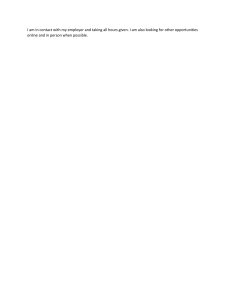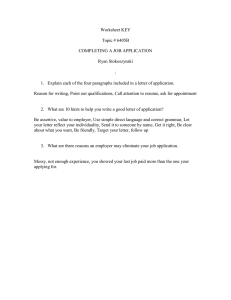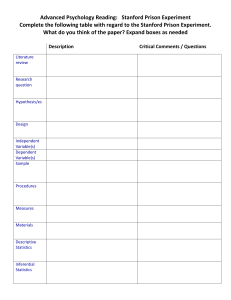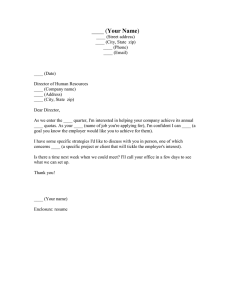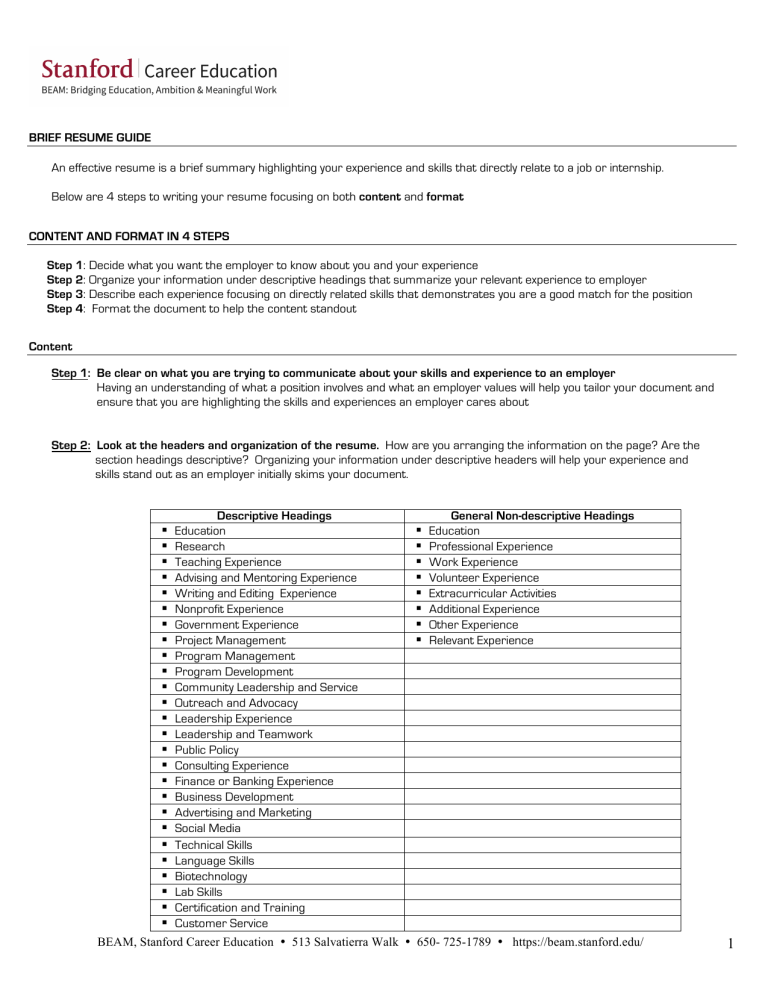
BRIEF RESUME GUIDE An effective resume is a brief summary highlighting your experience and skills that directly relate to a job or internship. Below are 4 steps to writing your resume focusing on both content and format CONTENT AND FORMAT IN 4 STEPS Step 1: Decide what you want the employer to know about you and your experience Step 2: Organize your information under descriptive headings that summarize your relevant experience to employer Step 3: Describe each experience focusing on directly related skills that demonstrates you are a good match for the position Step 4: Format the document to help the content standout Content Step 1: Be clear on what you are trying to communicate about your skills and experience to an employer Having an understanding of what a position involves and what an employer values will help you tailor your document and ensure that you are highlighting the skills and experiences an employer cares about Step 2: Look at the headers and organization of the resume. How are you arranging the information on the page? Are the section headings descriptive? Organizing your information under descriptive headers will help your experience and skills stand out as an employer initially skims your document. Descriptive Headings Education Research Teaching Experience Advising and Mentoring Experience Writing and Editing Experience Nonprofit Experience Government Experience Project Management Program Management Program Development Community Leadership and Service Outreach and Advocacy Leadership Experience Leadership and Teamwork Public Policy Consulting Experience Finance or Banking Experience Business Development Advertising and Marketing Social Media Technical Skills Language Skills Biotechnology Lab Skills Certification and Training Customer Service BEAM, Stanford Career Education 513 Salvatierra Walk § § § § § § § § § § § § § § § § § § § § § § § § § § § § § § § § § § General Non-descriptive Headings Education Professional Experience Work Experience Volunteer Experience Extracurricular Activities Additional Experience Other Experience Relevant Experience 650- 725-1789 https://beam.stanford.edu/ 1 § § § § § § § § § § § § § Management and Customer Service Arts Administration Arts and Entertainment Training and Development Design Experience Communications Technical Experience Computer Programming Experience Global/Public Health International Development International Affairs Projects Professional Associations Step 3: Look at each experience individually. What do you want the employer to know about each of your experiences? The content you focus on depend on the position you are applying for. Every employer looks for a specific set of skills from job seekers that match the skills necessary to perform a particular job. But beyond these job-specific technical skills, certain skills are nearly universally sought by employers, including: Skills § § § § § Communication Skills Analytical Skills Computer/Technical Literacy Managing Multiple Priorities Interpersonal Abilities • • • • • Leadership Skills Multicultural Sensitivity/Awareness Planning/Organizing Problem-Solving/Reasoning/Creativity Teamwork When describing relevant skills/accomplishments use the acronym C-A-R to ensure you are communicating your experience effectively § CONTEXT: o Setting (if not clear in name of organization), o Who did you work with (team collaborated on and/or population served) § ACCOMPLISHMENTS o Overall task/project/goal accomplished o Relevant skills/methods/tools utilized to accomplish task § RESULTS o Outcomes of actions (quantify results when possible) - OR o Include the purpose or significance of task/project/goal (why did you do something) ** How much information you provide regarding what you did, depends on how relevant the information is to Leadership and Teamwork Example Before Example Name of Student Organization, Stanford University, 0/0000 § Assisted with fundraising event After Example Name of Student Organization, Stanford University, 0/0000 § Collaborated with team of student leaders in planning and implementing fundraising event raising $5000 for research on heart disease in women. Recruited, trained and supervised 20 student volunteers. Coordinated schedules ensuring coverage for event and established a system of communication to inform volunteers on program updates. BEAM, Stanford Career Education 513 Salvatierra Walk 650- 725-1789 https://beam.stanford.edu/ 2 Research Example Department of Internal Medicine, Stanford University, Research Assistant Advisor: Name, MD § Investigated the experiences of serious illness in an urban underserved population in San Francisco County hospital to develop a new pain management service for vulnerable patients § Developed study idea, wrote IRB-approved application, conducted interviews, managed data analysis and final manuscript preparation § Presentation: Pain Management Interventions in an Urban Underserved Population. Doris Duke Charitable Foundation Conference, Portland, OR, May 0000 Format Step 4: Look at each section of the resume individually. What do you want the employer to notice immediately? Bold, italicize or indent that information. In each section consider highlighting either the organization and/or the position title so the reader can immediately see the range of experience you have. You don’t need to highlight city, state or dates Additional Tips on formatting your document: § § § § § 1 – 2 page Use 10-12 font size (for smaller fonts such as Times New Roman – use 11-12 font size) 0.75-1.0 margins (top and bottom margin can be .5) Use a font that is easy to read. (Times New Roman, Calibri, Cambria, Garamond, Helvetica, Arial, etc…) Bold, italicize, indent, and/or bullet any content you would like the reader to notice immediately BEAM, Stanford Career Education 513 Salvatierra Walk 650- 725-1789 https://beam.stanford.edu/ 3
